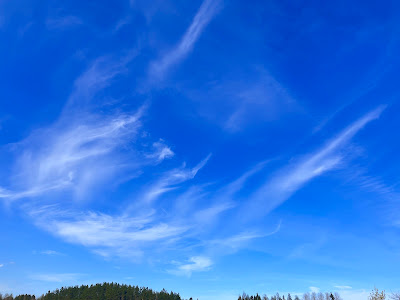As the days get longer and the sun travels more to the north, it gives a wonderful scenery in the sky.
Then I started noticing that just before and after sunset, there is this faint sun pillar in the sky.
A sun pillar is a vertical column of light that appears above or below the sun, creating a stunning visual effect. It occurs when sunlight interacts with ice crystals in the atmosphere, typically from high-altitude cirrus clouds. Here’s how it works:
Ice Crystals: When the sun is low on the horizon (such as during sunrise or sunset), its light passes through a layer of hexagonal ice crystals. These crystals can be found in thin, wispy clouds.
Light Refraction: As sunlight enters the ice crystals, it refracts (bends) and splits into different colors. The hexagonal shape of the crystals causes the light to spread out vertically.
Colorful Display: Sun pillars can exhibit various colors, including red, orange, pink, and purple. The specific colors depend on the angle of the sun, the size of the ice crystals, and atmospheric conditions.
Sunset and Sunrise: Sun pillars are most commonly seen just before sunset or just after sunrise when the sun is near the horizon. The low angle allows the light to pass through more ice crystals, enhancing the effect.
Remember, these beautiful phenomena are temporary and can vanish quickly as the sun moves. So if you ever spot a sun pillar, take a moment to appreciate its natural wonder!
My other blogs:
Roadscape Photography
Chevrolet El Camino 1970
Life @ Köyliö, mostly Finnish


























